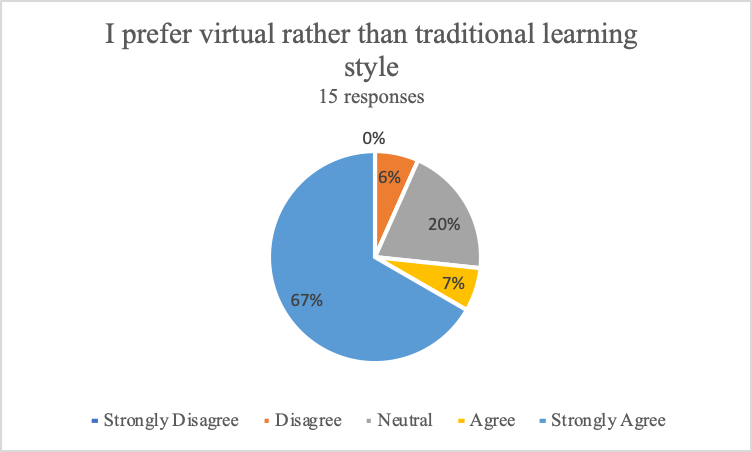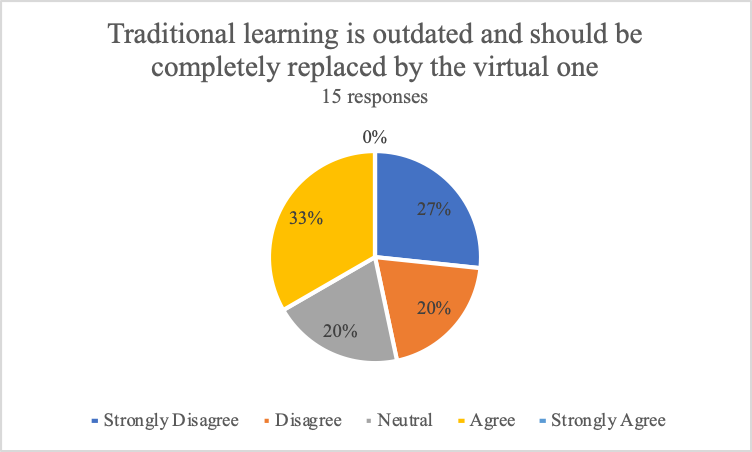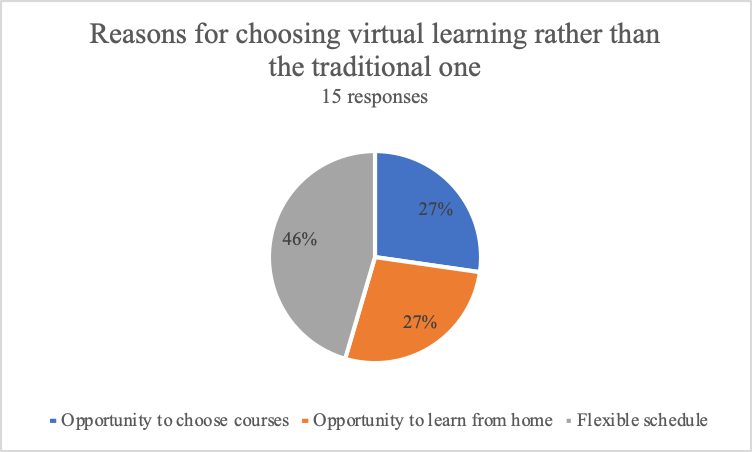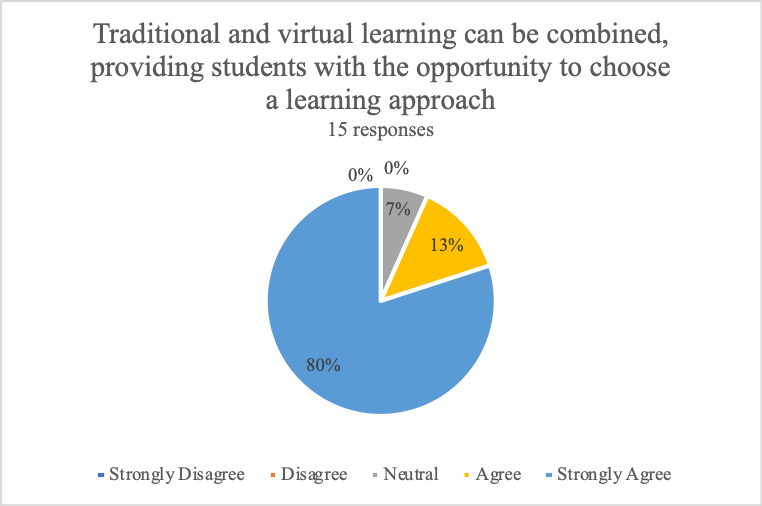Introduction
The research aimed to address the following issues – which style of learning (traditional or virtual) male students would prefer, as well as the reasons for their choices. The research approach that was chosen is referred to as the quantitative one, given a survey seemed the most appropriate option to obtain the necessary data. However, it should be noted that the qualitative element is also present – this was essential to identify the reasons for preferring either traditional or virtual learning. Hence, the objectives were to figure out the most desirable approach to learning (traditional or virtual), the foundations for this choice, and to give suggestions for improving students’ experience regarding their classes. Therefore, below, the discussion on the results, as well as the visual explanation of how these results were obtained, will be provided.
Data Analysis and Results
I have utilized all the collected data to get appropriate results. Of 15 students, there are 11 who prefer virtual learning rather than the traditional one; 3 answered neutrally; 1 disagreed. It should be noticed that of these 11 participants, 10 expressed strong agreement to choose virtual classes (Figure 1). However, only 5 students stated that they would like traditional learning to be completely replaced by the virtual one (Figure 2). This implies that many students still realize the significance of traditional classes. Then, the analysis of the participants’ open-ended answers regarding the reasons for the preference for virtual learning allowed identifying these reasons below (Figure 3). The most mentioned one was the flexible schedule of classes, which results in increased free time. Figure 4 shows the students’ consent that an appropriate combination of the best practices from traditional and virtual courses would be a significant action to undertake.




Conclusion
I have provided the data analysis and results. Moreover, I have explained the latter and given a visual explanation regarding why undergraduate, male students from PMU preferred virtual classes rather than the traditional ones.